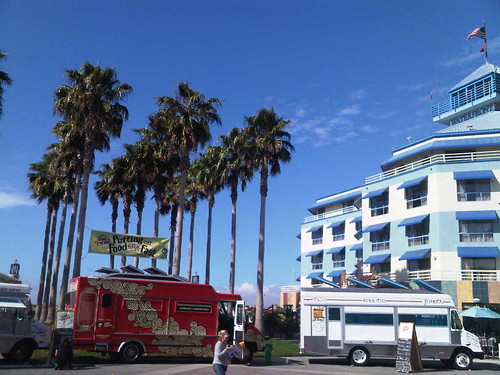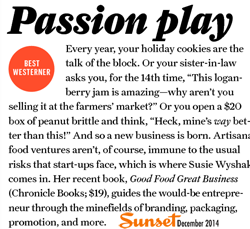In this month’s Edible East Bay, Derrick Schneider shares his experience Eating Street Food in Emeryville.
The 3 vendors he interviewed – LIBA Falafel, Seoul on Wheels (both who were at the Eat Real fest), and Jon’s Street Eats – share their inspiration to start their businesses and challenges to keep them going – an interesting juxtoposition to The First Annual Street Food Conference in San Francisco, which brought together vendors, policy makers, and mobile food business advocates to share the “state of street food” in cities across the US as well as Toronto.

I’d never attended such a information-packed set of panels. I tried to summarize some high points to help both vendors and cities. If I got anything wrong just let me know and I will correct it! 🙂 See and hear the full presentations.
Benefits of Mobile Food Businesses to Cities
- Provides city revenue
- Creates new business owners
- Brings food, and variety, to customers seeking more choices
- Creates a new tourist attraction
- Makes food accessible in new part of town
Policy Ideas from Cities
San Francisco California:
San Francisco is revamping its policies due to the popularity of street food by potential businesses and residents. The new regulations will likely make it quicker and easier to get permits, in more locations. Sounds like a vast improvment over current guidelines.
Oakland California:
- Limits the number of mobile businesses
- No restaurant owned pushcarts are allowed, to allow more lower income people to become micro-businesses.
Madison Wisconsin:
- All food vendors need to be selling unique types of food (e.g. didn’t want all hotdog vendors).
- Structures need to be light enough that one person can move the cart.
- They’re working on creating a new street cart ordinance that’s just for food to make it more manageable.
Portland Oregon:
- Adapt based on demand; they increased limit of vendors in a park from 1 to 4.
- Private property owners of lots advertise to attract businesses and provide amenities like electrocity.
- Vendors locate near businesses like corporate offices where there’s no other food service nearby, for a built-in clientele.
Atalanta, Georgia:
- Nonprofit festivals allow for food trucks. (This presentation left the most people stunned at the difficulty of running a mobile food business currently, when from the photos we saw, there are many underserved areas where workers would likely enjoy having food nearby vs. having to drive.)
Of course New York wrote the book on street food. Their vendor guidelines, in many languages, is a sight to behold for fans of great infographics.
If you Google news about mobile food businesses and street food, you’ll see lots of articles about many more cities testing out their street food programs.
Advice & Ideas for a Successful Mobile Food Business
From Matt Cohen, SF Cart Project / Off the Grid
- Be flexible with your vision. what you love isn’t necessarily what people will love about your business.
- Operating illegally is not a valid plan.
- Have a hook to get people in
- Important that you do one thing really well
- Be stubborn. As a group mobile vendors are the most stubborn people he’s met.
- It’s the love of the interaction wtih customers that will keep you there. If you don’t love that, it may not be right.
From Larry Bain, Let’s Be Frank
- Figure out where your niche is.
- Can you survive by doing one thing?
- Pick a food people will crave. He chose hotdogs because they’re iconic. “Fat, cheap and out of control mystery meat.
- Consider extra income and distribution. They made a variety of branded condiments and sells packaged franks at retail. If they depended only on operating out of carts, it wouldn’t work economically.
Resources
If you’re not quite sure who runs your street food vendor permitting and licensing, try asking existing vendors.
Starting a Mobile Food Business in San Francisco
Find Street Food in San Francisco







